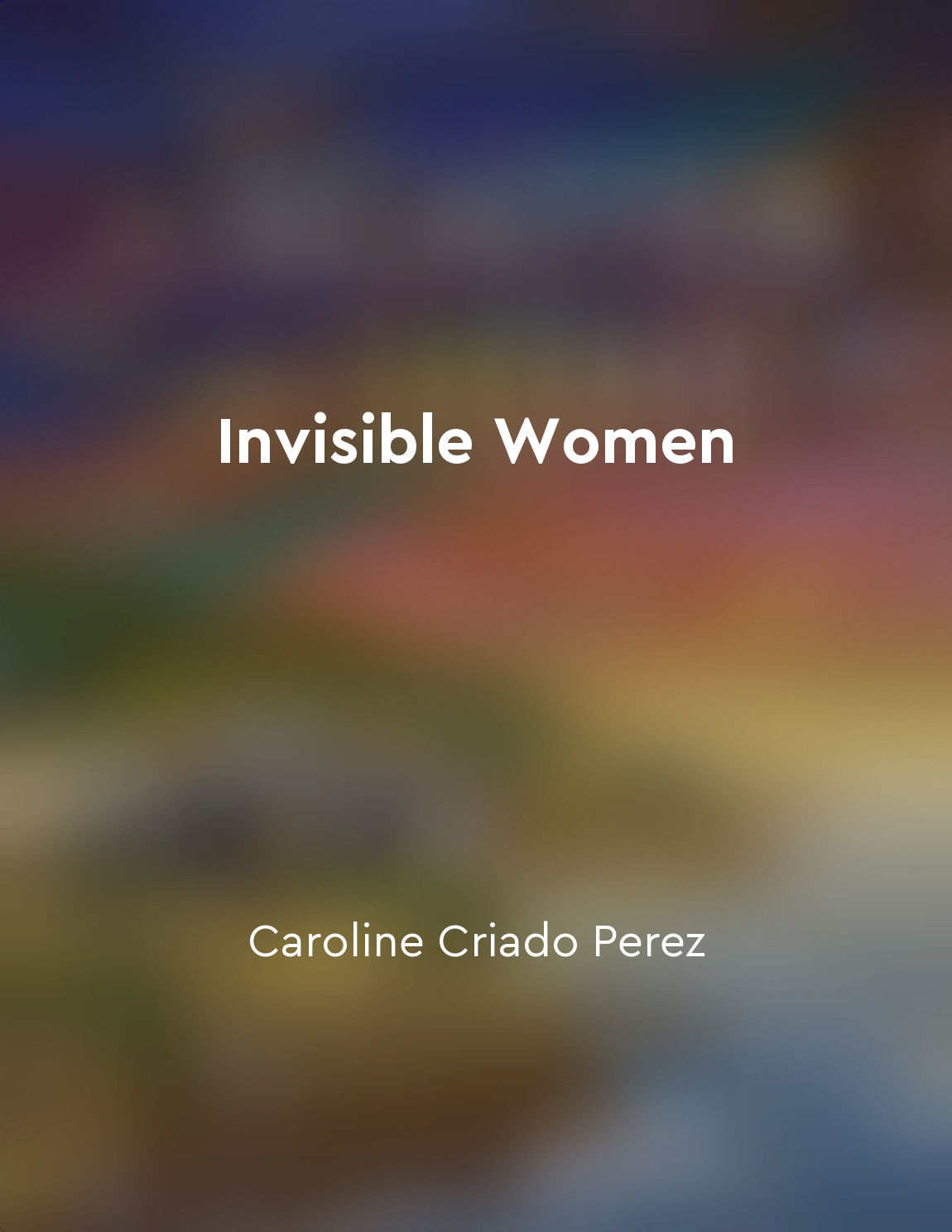Gender data gaps hinder progress on gender equality from "summary" of Invisible Women by Caroline Criado Perez
The absence of gender data is not just an inconvenience; it is a glaring obstacle to achieving gender equality. Without accurate data on women's lives, experiences, and needs, policymakers are essentially flying blind. This lack of information leads to policies and programs that fail to address the specific challenges faced by women. When data is collected, it is often done in a way that overlooks or minimizes women's experiences. For example, the default assumption in medical research is that male bodies are the norm, leading to a lack of understanding of how diseases and treatments affect women differently. This oversight can have serious consequences, as seen in the case of heart attacks, where women's symptoms are often dismissed or misdiagnosed because they present differently than men. In the realm of economics, the failure to account for unpaid care work disproportionately carried out by women leads to a distorted view of the economy. This invisible labor is essential for the functioning of society, yet it is not recognized or valued in traditional economic measures. As a result, women's contributions are overlooked, undervalued, and often taken for granted. Furthermore, the lack of gender-disaggregated data perpetuates harmful stereotypes and reinforces gender inequalities. Without accurate information, harmful myths about women's abilities, preferences, and roles continue to flourish. These stereotypes shape societal expectations and limit women's opportunities for education, employment, and advancement. In order to address these gender data gaps, it is crucial to prioritize the collection of accurate and comprehensive data that captures the full range of women's experiences. This data is essential for informing policies that are responsive to women's needs, promoting gender equality, and challenging harmful stereotypes. Only by recognizing and addressing these data gaps can we begin to dismantle the barriers that stand in the way of true gender equality.Similar Posts
Sex differences in communication styles emerge early in childhood
The way boys and girls communicate with others can vary greatly from a very young age. Research has shown that these difference...
Authentic communication is crucial
Authentic communication is crucial. When we speak of authentic communication, we are referring to an open and honest exchange o...

Embrace diversity and inclusion
Diversity and inclusion are not just buzzwords; they are essential ingredients for creating a more just and equitable society. ...
The scientific community must address gender biases to achieve progress
Gender biases within the scientific community are pervasive and insidious. From the earliest days of scientific inquiry, women ...

Women's experiences are invalidated by biased data
The data we have about the world is not neutral. It is created by people, and people have biases. These biases can lead to cert...
Gender should not determine a person's worth
In a just society, the value of an individual should not be contingent upon their gender. Both men and women possess the capaci...
Access to affordable childcare is a feminist concern
The issue of affordable childcare is not just a matter of convenience or economics. It is a feminist concern because women, esp...

Foster female leadership
The key to unlocking progress for all of society is to ensure that women have a seat at the table where decisions are made. Whe...
